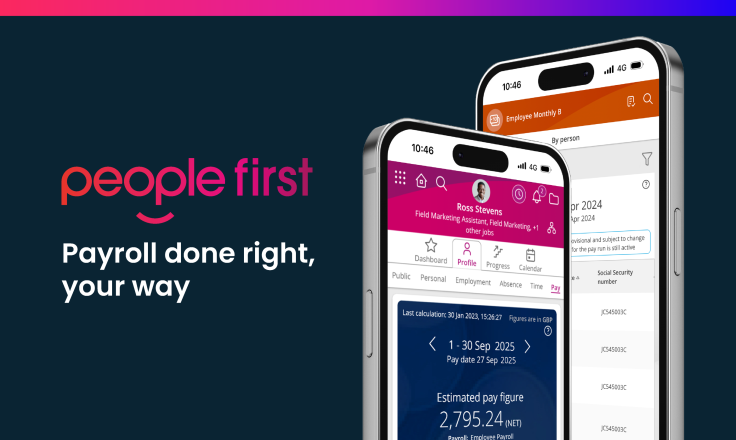Understanding financial wellbeing
We’ve talked a lot about why financial wellbeing matters before, and how to implement it into your company. If you want to dig a little deeper into what financial wellbeing is and why it matters, you can take a look at our complete guide.
It’s quickly becoming apparent just how important financial wellbeing is to employees. According to Wagestream, 47% of employees feel distracted at work due to financial stress. Plus, employees who are financially stressed are five times more likely to take sick leave. If you want your employees to avoid the dangers of mental-ill health, then you need to be thinking about their financial wellbeing.
Remember, while many assume it’s people on low wages that struggle the most with money and finances, anyone from any background can face issues.
So with this importance in mind, how do we build a financial wellbeing strategy that supports the needs of the business and the needs of employees?
5 Steps to develop a financial wellbeing strategy
While the exact shape of your financial wellbeing strategy will vary based on your organisation, and the kinds of employees you have, you can break down your requirements into five key phases.
Build a strong foundation
Setting clear financial wellbeing goals for your strategy will ensure it’s as effective as possible. Do you want to help employee wellbeing, reduce absenteeism or build your employer brand? These are all things that a good financial wellbeing strategy can help with, so focusing in will help you get more specific.
Building a business case to support your strategy will help you throughout the process. You can return to a well thought out core and make it clear just how important it is to the rest of the organisation.
What do your employees need?
While the cost-of-living crisis may have sped up the conversation around financial wellbeing, but it shouldn’t be seen as the be all and end of the subject. Likewise, many assumed that it’s lower-paid roles are the only people at risk of poor financial wellbeing, but this is not always the case. You need to consider every employee.
A strategy is built on knowledge. Polls and surveys can help you see what employees value. Your payroll department might also have some key insights to share. If you already have financial wellbeing offerings, it’s worth evaluating how they’re being used.
Take pictures
The exact steps you take here will depend heavily on what your research in the earlier two phases uncovered. For example, if your employees feel they’re underpaid for the market, you’ll want to take a look at wages. If they struggle with understanding their payslip, offering some learning may be helpful. If budgeting is difficult, investing in a real-time payroll engine could be key. There are many options on the market, and finding the right ones is key.
Implement and engage
You’ve picked out what new financial wellbeing offerings you’re going to offer. Now you need to implement them. Create an implementation strategy to help bring these initiatives in smoothly. Make sure that instead of offering a disconnected pile of offerings, and instead pitch them as an interconnected solution.
This is because it will make it easier to communicate with employees about what services they can utilise. If you have a clear, concise offering, accessing it becomes much easier. Your communication strategy should be factored in at this stage as well. What communication channels will you use? Are people engaging with it?
Is it working?
With your strategy in place, you need to take the time to evaluate how well it’s working. This can take the form of surveys, but it could also involve the take up of any benefits, participation rate and direct data.
Implementing and evaluating your financial wellbeing strategy
Once you’ve created a strategy, you need to communicate that strategy clearly to your employees.
More than many employee engagement initiatives, financial wellbeing really relies on buy-in to be effective. Whatever solutions you offer, you need to make it very clear where and how employees can access it. There’s no point having incredible financial wellbeing services and benefit packages if employees can’t use them.
One of the biggest roadblocks to true financial wellbeing is the financial literacy of your employees. With financial coaching and other avenues of advice, you can give employees the tools they need. Employee assistance programmes are good for this. Internally, perhaps your payroll team can roll out learning material about payslips, tax, or pensions.
After all this, however, you need to figure out how to measure the success of our new initiative. The best way to do this is through an employee satisfaction survey, where you directly reach out to employees and ask them how things are going.
What does success look like?
Measuring the success of a financial wellbeing is vital if you want a sustainable strategy. What success actually looks like will depend heavily on those goals you set out in the early phase, but there are some key questions you can ask.
- Are employees engaging with the strategy
- If not, can you figure out why? Do they simply not know about them or are they not useful to them?
- Are employee engagement levels high generally?
- Are your absenteeism figures improving?
Armed with this information, you’ll be able to tweak and refine your strategy even further, ensuring money and finances remain high on the agenda for each employee.
Financial wellbeing? We're on it.
Financial Wellbeing from MHR offers a range of solutions that can really help employees feel more financially secure and could form a key part of your strategy.
For starters, you’ll be able to offer financial coaching, which can do wonders for the financial literacy of employees. This sets them up for success in the long term, giving them the language and understanding they need to more securely navigate the world of finance.
Financial Wellbeing from MHR also enables more flexible earned wage access. This means employees can get some of their wages at a time that suits them, giving both an extra cushion against sudden unexpected costs as well as being a factor in monthly budgeting.
People First also offers a real-time payroll engine. This can work wonders for financial wellbeing, as it gives employees a clear, instant picture of how much they’ve earned, and what deductions they can expect. It also massively increases the accuracy of the pay cycle, giving employees certainty they’re going to be paid on time, every time. Real-time payroll is a lot like pulling back the curtain, giving incredible levels of transparency for each employee. Think of it like watching a professional chef making your food.



